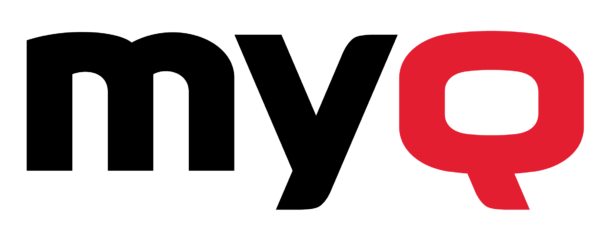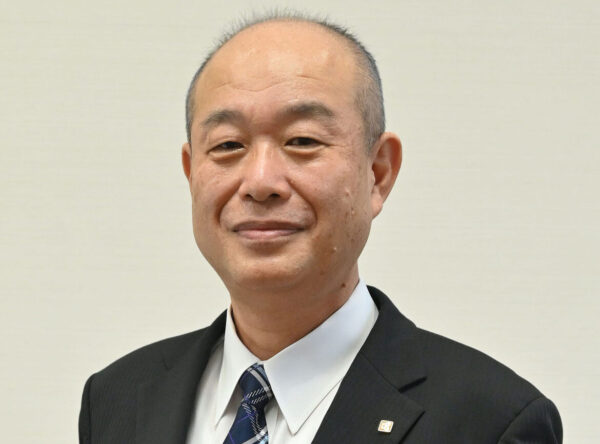Kyocera leverages inkjet, ECM, and production print, as well as its long-standing value proposition in imaging to more effectively compete.
Above: Kyocera building in Osaka
After attending the Kyocera dealer meeting in Las Vegas earlier this year, we had a good idea of what might be discussed when we visited Kyocera Document Solutions, Inc. on our last day in Japan. As expected, the conversation centered around production print, inkjet, and ECM.
The presentation began with an update on the company’s financial performance, with President Norihiko Ina reporting the company was up 14.5% for fiscal year (FY) 2018, thanks to record high sales. Ina added Kyocera sold more than two million units (MFPs and printers) last fiscal year for the first time in the company’s history.
Despite the positive news, Ina acknowledged Kyocera is facing various business challenges that it must address if it wants to remain competitive, particularly in the mature MFP and printer business. One of those challenges is expanding its sales channels, particularly retail, especially in Europe. To do that, Kyocera will establish new sales companies in Eastern Europe as well as Asia to further grow the business. We believe this news is important for dealers in the U.S., as Kyocera’s global financial health and expansion can only serve to enhance its standing as a strong business partner for the U.S. dealer channel.
Other challenges cited by Ina include maintaining environmental responsibility, especially as related to the power consumption of its products, changes in printing volume, and internet of things (IoT) utilization. While these were identified as challenges, they can also be viewed as opportunities for Kyocera.
“We are continuing to aggressively invest to strengthen the company,” said Ina, citing how the company is upgrading its factories and automating toner container production, as well as its laser scan unit factory. As we heard at the dealer meeting earlier this year, Kyocera has moved production of its A4 color machine from China to Vietnam to strengthen the cost competitiveness of the device.
While we didn’t hear many specifics, Kyocera’s R&D is focusing on a more modular design of its MFPs and printers. Approximately half of the company’s R&D resources are devoted to MPFs and printers, while half the company’s engineers are tasked with developing new technologies such as inkjet.
“This is very important for us to maintain and strengthen competitiveness,” stated Ina.
None of the companies we visited on this tour dismissed the decline of pages in the office, and Kyocera is intently focused on trends such as changes in print volume, the move to paperless, and the proliferation of electronic documents on corporate networks””trends the company sees accelerating dramatically. With electronic documents on the rise, Kyocera expects customer demand for optimized workflow to be a big part of this growth and are positioning themselves as a vendor that can optimize a customer’s workflow via ECM. The plan is to expand the ECM business in Europe and the U.S. through acquisitions and partnerships.
ECM is the Future
Any discussion of what Kyocera is doing with ECM, particularly as it relates to the U.S. dealer channel, must include a discussion of DataBank and Hyland OnBase. When we first heard about the partnership with DataBank at a Hyland Software user event some six months prior to the announcement that Kyocera had acquired DataBank, we felt it was a step in the right direction for Kyocera, as this is a software segment that offers huge potential. Having an organization such as DataBank perform much of the heavy lifting will be an asset for Kyocera dealers. One concern we have is that the Hyland product is geared more toward larger organizations and enterprises. There’s going to be an element of sticker shock for some dealers that take this product on, especially if they don’t have customers that might benefit from or can afford such a solution.
Kyocera executives in Japan hinted they were planning to address this obstacle in the future. They couldn’t be specific, but if we could offer an educated guess, an ECM solution targeting SMBs””as in the smaller end of the SMB spectrum””will eventually be among the company’s solutions offerings, whether it’s a solution that is internally developed or from a third-party solutions provider. Or, to go out on a strong limb, this may be something Kyocera decides to go out and acquire. Again, none of this was addressed in our conversation, it’s just us drawing our own conclusions.
No More Pining for Production
Kyocera’s entry into the production space with the 15000 inkjet production printer represents a long overdue introduction for this imaging and technology manufacturer. Even though this is Kyocera’s first inkjet production machine, it will not be the company’s last, as Kyocera is planning on strategically introducing a full line of inkjet production devices in various speed ranges.
Ina conceded that having no productionproduct up until now was a challenge. Now that Kyocera has it, they’re going all in. Ina added that while print is declining in the office, mass printing is still important as is the demand to customize documents and variable data printing.
That variable data printing component is important to get Kyocera into commercial printing, according to Ina.
This visit included a demo of the 15000. We had seen the 15000 during the Kyocera dealer meeting in Las Vegas in April, but this served as a reminder as to just how far Kyocera had come from being left out of the production print space to having a model that put it front and center in the space. Our one caveat was the device’s footprint, which is more than 24-feet long when fully configured. When we expressed our concerns, we were told the footprint varies depending on the finishing options and number of paper sources. It’s still not clear to us who will be interested in the device with fewer paper sources and finishing options, as compared with the fully equipped device.
Kyocera’s commitment to inkjet technology isn’t going to be limited to the production space. From there, we expect to see inkjet technology in Kyocera’s future A3 and A4 MFPs, which should further enable the company to leverage that lowest cost of ownership proposition the company’s been touting for years with its printers.
Debriefing
Following our meeting, we enjoyed a traditional Japanese lunch at a 38th floor Osaka restaurant. The red carpet was rolled out again at dinner time when we joined Ina and his team at his favorite Osaka sushi restaurant.
This surely is an exciting time for Kyocera, and it was substantively evident the Kyocera team is thrilled to finally have a production device. That said, this company is also looking at business srategies beyond hardware and is focused on growing its ECM business. Both initiatives present a host of challenges, but we believe those are outweighed by the opportunities. Here, in the U.S., we consider the 15000 the ideal product for Kyocera dealers that are not already aligned with a production print vendor. As for ECM, even though the current Hyland offering may be positioned a little higher up the food chain for sale to the average Kyocera dealer’s up-anddown-the-street customers, this is the future. We encourage dealers to take a close look at this product, even if it isn’t a good fit right now, while we are also recommending Kyocera add a more entry-level ECM solution to the mix that will appeal to a broader customer base.
Access Related Content
Visit the www.thecannatareport.com. To become a subscriber, visit www.thecannatareport.com/register or contact cjcannata@cannatareport.com directly. Bulk subscription rates are also available.



